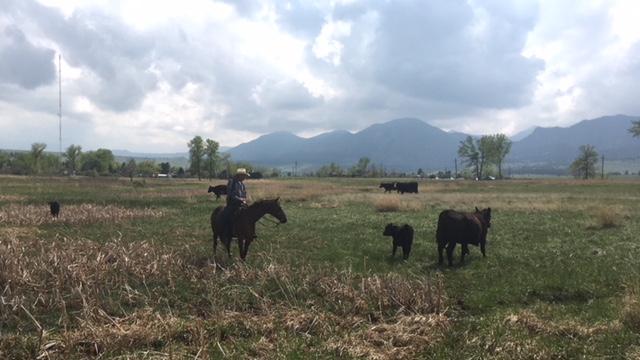This post is long overdue, I thought I should at least write it down before the vote on Tuesday. And now this post has been overtaken by events during its gestation, and it looks like we won't even have that vote. No matter. This isn't really going to be about the failure of the brexit process, that would be too easy. OK, just a few words about that first. It failed because the 52% who voted to leave were all promised such ridiculous and contradictory things, ranging from the Bangladeshi Caterers Associating being conned into believing they might find it easier to recruit curry house chefs by none other than Priti Patel (see how well that turned out), to Scottish fishermen believing we'd get all "our" fish back (hint: a large proportion of them have to be sold into the EU anyway as they are not eaten in the UK), the lies about more money for the NHS, the forthcoming trade deal being the "easiest in human history", to the general fabulists promising three-quarters of the Single Market (but none of those pesky foreigners) and unlimited free trade with no Customs Union, and by the way let's pretend the Irish problem doesn't exist. It was obvious from the outset that there never was an actual real brexit that would be supported by a majority, either in the country or in parliament. Moreover, there was no way we were going to build the necessary infrastructure in the time available for things that would be required by a "real" brexit like customs checkpoints, let alone replicating all the other functions that the EU currently performs for us (EURATOM being one notable example), this would be a humungous planning exercise and expense that would probably take a decade to achieve even if the govt pulled its finger out and went full steam ahead on it.
Therefore, by the time I'd had my breakfast on the morning of the 24th June 2016 I had worked out that brexit probably wasn't going to happen, and I was feeling a bit stupid that I hadn't actually realised this before the vote. I think the first time I actually wrote this on the blog was June 2017 but I'd already bored Stoat in the pub on the topic rather earlier (must have been August 2016?), and a few others besides. I shouldn't big myself up too much: I have never been 100% certain that brexit was not going to happen, and indeed there are still some mechanisms by which it could happen, but I was always quite confident that it was unlikely. Once the fantasies unraveled, the reality was never going to be attractive, and as long as there's still a way out at that point, we will probably take it.
What I'm really interested in, for the purposes of this blog post, is how and why the rest of the country hasn't allowed itself to work this out: why have we failed to analyse and understand the brexit process adequately?
Since that fateful day in 2016, there has been a rapidly growing cottage industry of experts pontificating on "which brexit" and "consequences of brexit" and "types of brexit" and "routes to brexit". Journalists have breathlessly interviewed any number of talking heads who have come out with their vacuous slogans of "brexit means brexit" and "red, white and blue brexit" and "jobs-first brexit" and...it's all just hot air. It really does seem like they have all been so firmly embedded in their own little self-referential bubble of groupthink that none of them ever stopped to consider...is this really going to happen? There has been an utter failure of the journalistic principle of holding power to account, and also an utter failure of academic research to explore possibilities, to test the boundaries of our knowledge. Instead there has been little more than non-stop regurgitation of the drivel that "brexit means brexit" and that the govt is going to "deliver a successful brexit". I wonder if, to a journalist or political scientist, the new landscape of a post-brexit world is so enticing and exciting that they have wished themselves there already?
The BBC had an official policy of "don't talk about no brexit", right up to and beyond the million-person march in London at the end of October. Humphries enjoyed sneering about the "ludicrous Peoples' Vote" when forced to mention it, though of course he sneers about most things these days. Note that the last time so many people marched together London, it was in opposition to the Iraq war. There could be a lesson there, if anyone was prepared to think about it...
Theresa May of all people took everyone by surprise when she was the first person in any position of authority to utter the words "no brexit at all" earlier this year. At which point at least half the country issued a huge sigh of relief, even though it was only intended as a scare tactic to bring the brexiters into line. Amusingly, even many of them agreed that her threatened no brexit at all was actually better than the dog's dinner she was in the process of negotiating.
And how about the academics and think-tanks? Of course some of these are nakedly political and cannot be taken seriously, but some are suppose to be independent and authoritative. Such as "The UK in a Changing Europe". (Disclaimer: I was at university with Anand Menon, who was a clever and interesting person back then too, so I'm sure he won't mind a bit of gentle criticism.)
Watch this short video, which was published to widespread acclaim just 6 weeks ago at the end of September. In it, Anand promises that he will tell you "everything you need to know" about brexit. He even emphasises the "everything". And then proceeds to talk about different types of brexit and how they might arise. What is telling here is that he didn't discuss the possibility of Article 50 being revoked and the UK staying in the EU - this outcome simply was not in the scope of possible outcomes for him as recently as September! An impressive failure of foresight. (Even those who don't yet think it is the front-runner must surely agree it is now reasonably plausible.) If academics are not able to think the unthinkable and explore the range of possible outcomes, then I have to wonder what they are actually for. It is the political equivalent of a world in which climate scientists had determinedly ignored the possibility that CO2 might be an influence on climate, and had instead devoted themselves to arguing fruitlessly over whether the observed warming was due to the sun, or aerosols instead.
So here's my real point, and the reason for my rant. Journalists and academics, by studiously avoiding speaking truth to power and colluding with this false brexit certainty, have done a great disservice to the British public. Their unwillingness to challenge politicians on both sides has permitted an entirely fake debate about a blue Tory unicorn brexit on one side, and a red Labour unicorn brexit on the other. As a result, the miserable deal that May has produced - pretty much the only one possible, if you insist that keeping out foreigners is the top priority - seems shockingly poor to everyone. We were promised sunlit uplands, and jokers like Johnson and Rees-Mogg are still promising sunlit uplands to all and sundry with no fear of an intelligent challenge from a journalist. (Note how affronted Peter Lilley was recently when the BBC actually did produce a "fact-checker" to opine on his interview.) Meanwhile Labour promises to do the same only better, just because. The entire Govt policy over the last two years has been nothing more than "let's get through the week and see what turns up". And when the plan falls down and we end up staying, roughly half the country will be shocked and feel betrayed, because they were told their vote would be acted on, and have been told for the past two years that their votes were being acted on, and everyone pretended that things were going full steam ahead when in fact there never was a plan, or a plausible way forward.
Well, the public were told lots of things, many of them were lies, and this was enabled by the journalists and academics not doing their jobs. Whether it is collusion, group-think, cowardice or stupidity, it has greatly damaged the country, and we will all have to suffer the consequences. I like to think that lessons may be learnt, but in all probability they will all pat each other on the back and utter meaningless aphorisms: "prediction is difficult: especially about the future". Maybe so, but I predicted it, and I was not alone in doing so.
Better post this before it's overtaken by events again :-)



























